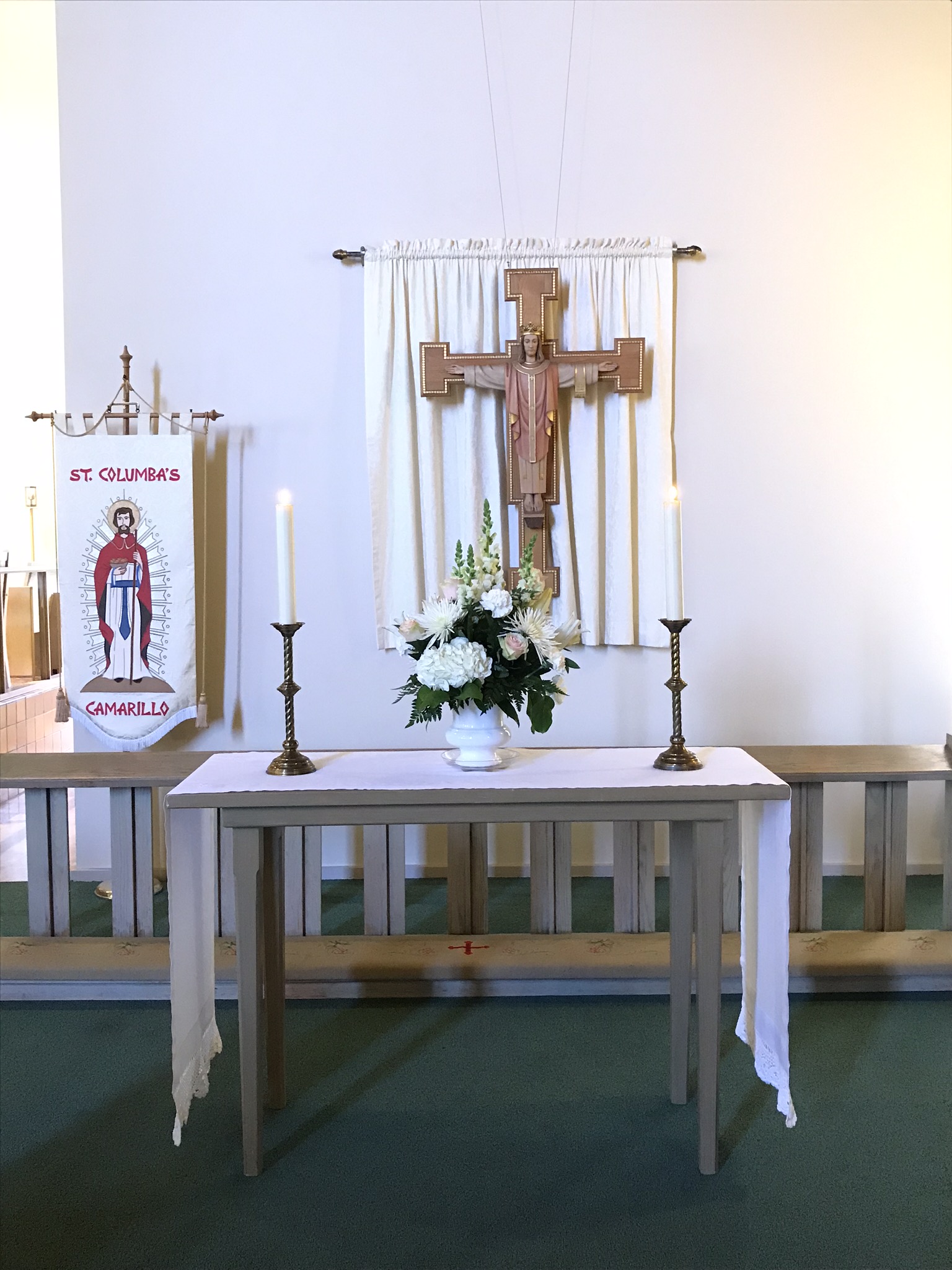Historical Photos
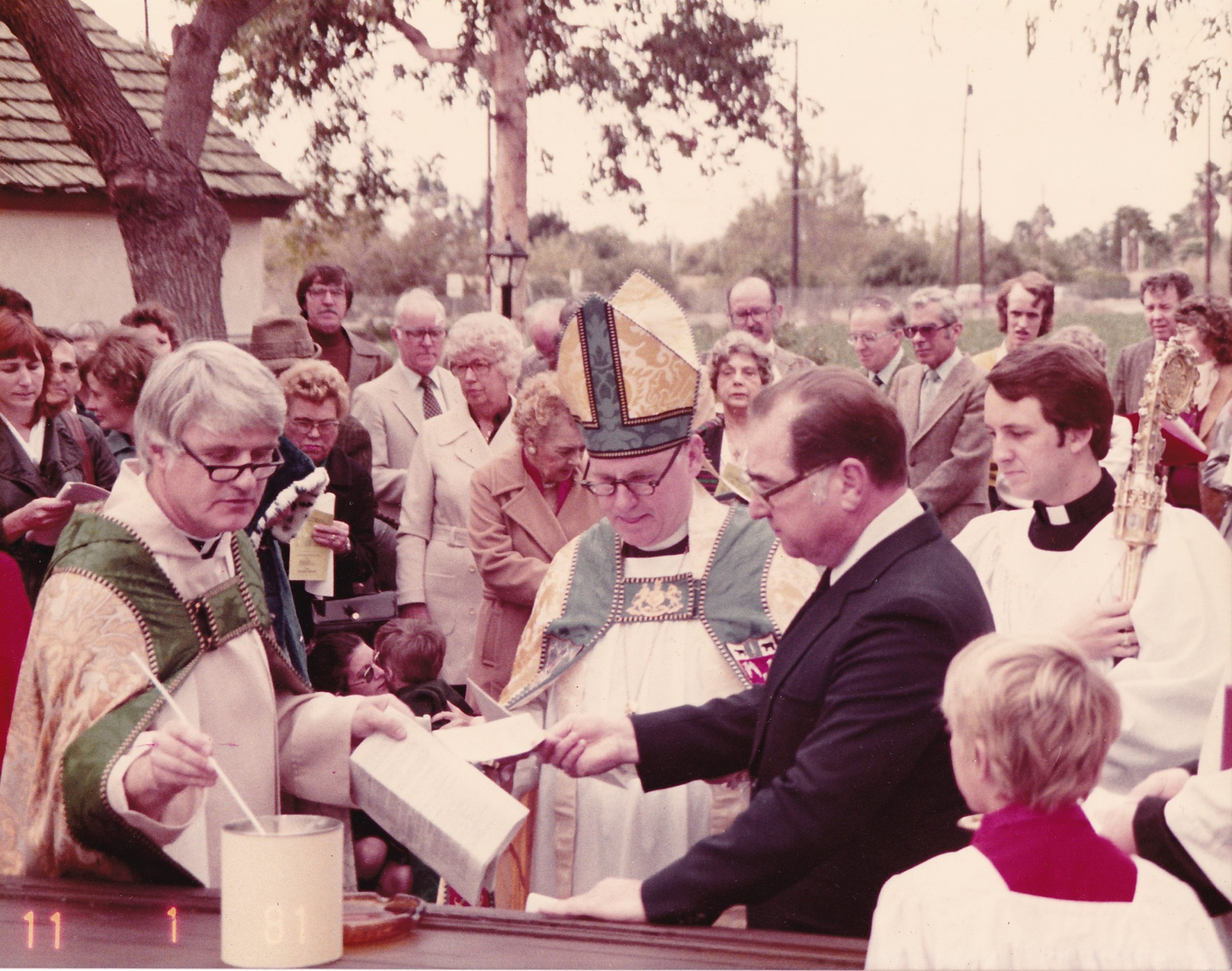
From a note about this photo, Fr. Al Smith wrote:
This picture of the mortgage burning for the present church building was taken on Sunday, November 5, 1978, during the 10:15 a.m. service. It had rained all night and up to the service. As soon as we moved inside, the rain began again. From R to L, front row: Acolyte Patrick (Boomer) Harding, The Rev. Rand Reasoner, Bishop’s Chaplain; Bill Hale, Sr. Warden; Bishop Robert Ruack; The Rev. Al Smith, Rector. Back row R to L: Gene and Judy Harding, Marty Cervo, Bill Moritz, Jim Cecil, Bill Kohagen. Lela Alford standing to the left of the Bishop’s mitre, wearing raincoat/glasses. In front to her, tan coat is June ?. Bitsy Lyon, kneeling with child and she’s wearing dark glasses. Tom Rosser in back, wearing tie; Bill Frew, standing in back, wearing glasses/brown hair; Jean Graeber, wearing glasses/holding papers. To the left of Al Smith’s head is Jane Cervo, looking to her right, and Gordon Cervo in back of her.
Webmaster Bob Waite’s note: I must have been just out of view with my wife Sharon and children Anne and Andrew, as were many others.
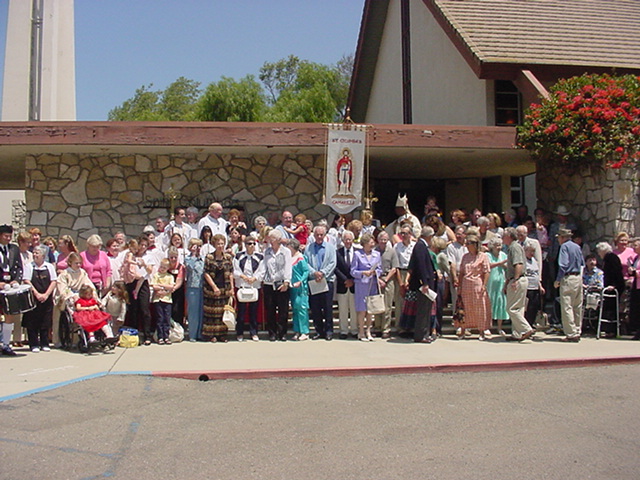
St. Columba’s Parish on St. Columba’s Day Celebration 2004 — Our 50th Anniversary!
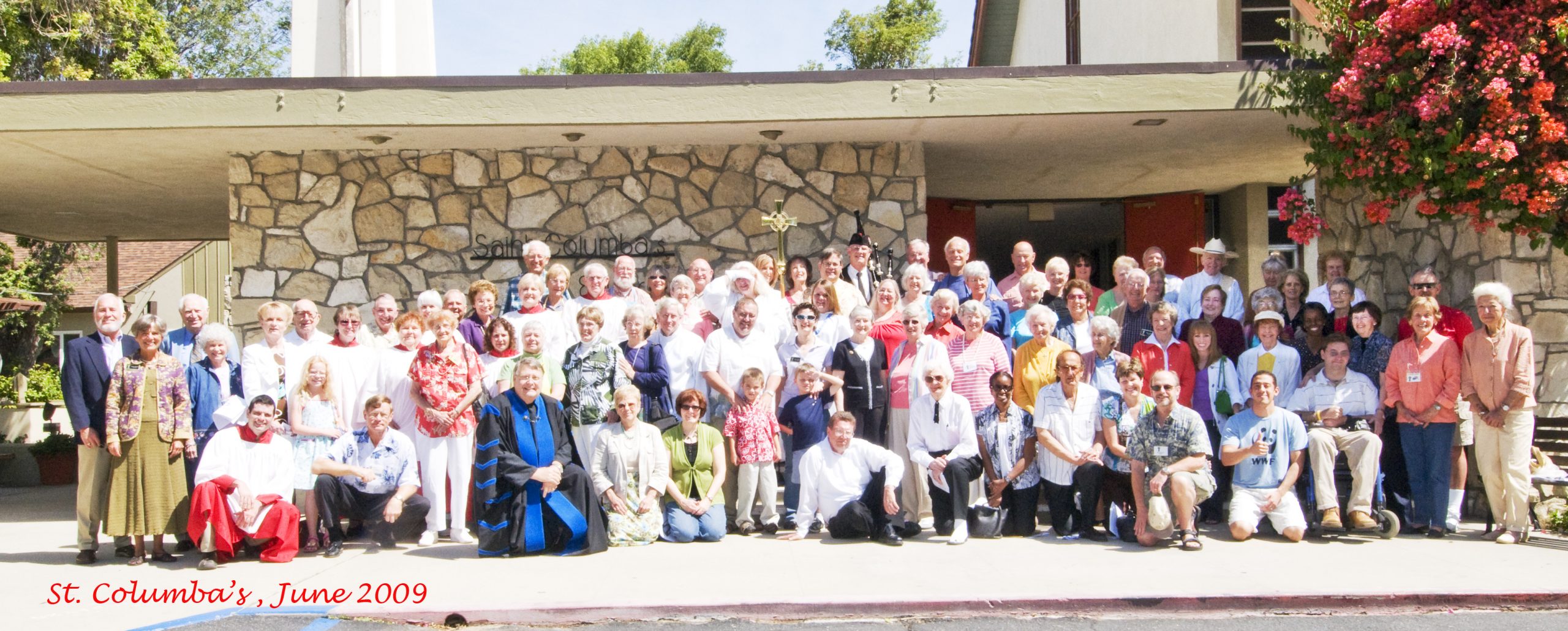
St. Columba’s Parish on June 14, 2009, Celebration of St. Columba’s Feast Day

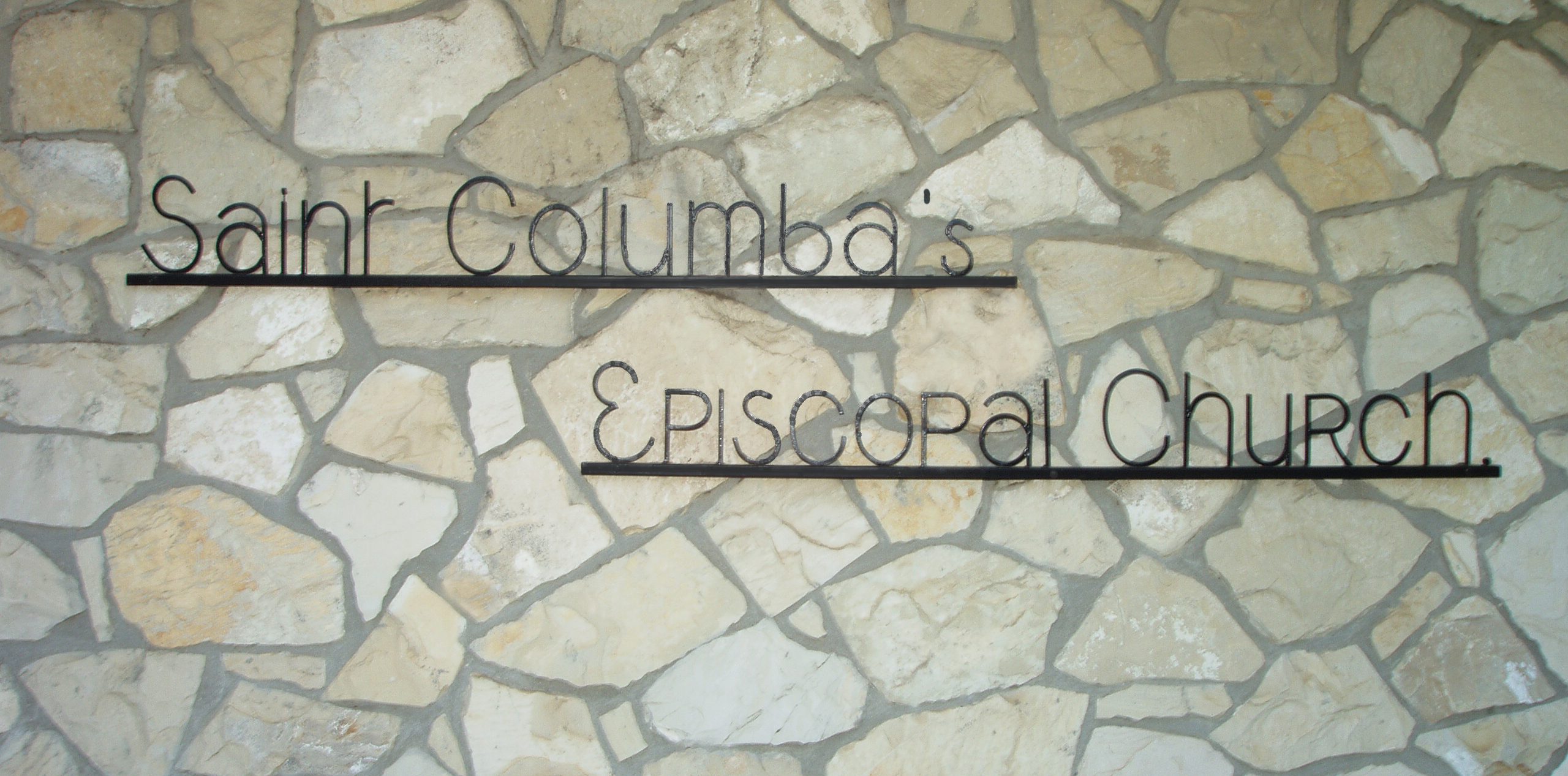
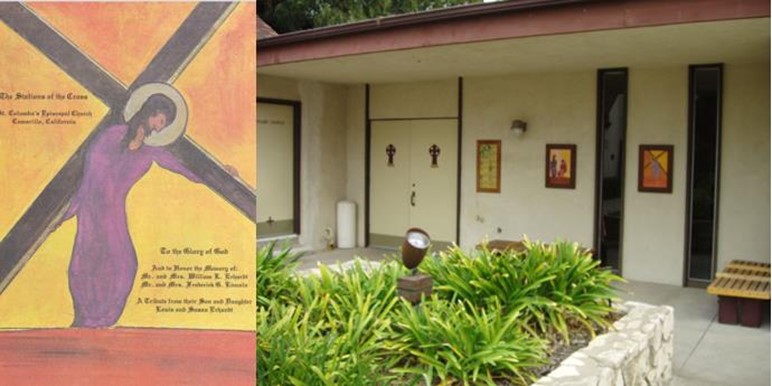
St. Columba’s was blessed with the gift of the Stations of the Cross, a set of ten framed images. They were a gift from Louis and Susan Erhardt. The artist was R. C. Stanley, minister, landscape designer, lecturer, and painter of the seas, woodlands, and of people. The Way of the Cross, designed for St. Columba’s Church alone, is portrayed on fired ceramic tile and depicts the suffering of the Savior and the glory of His Resurrection. There is a commemorative plaque in the corner of the planting bed shown in the photo.
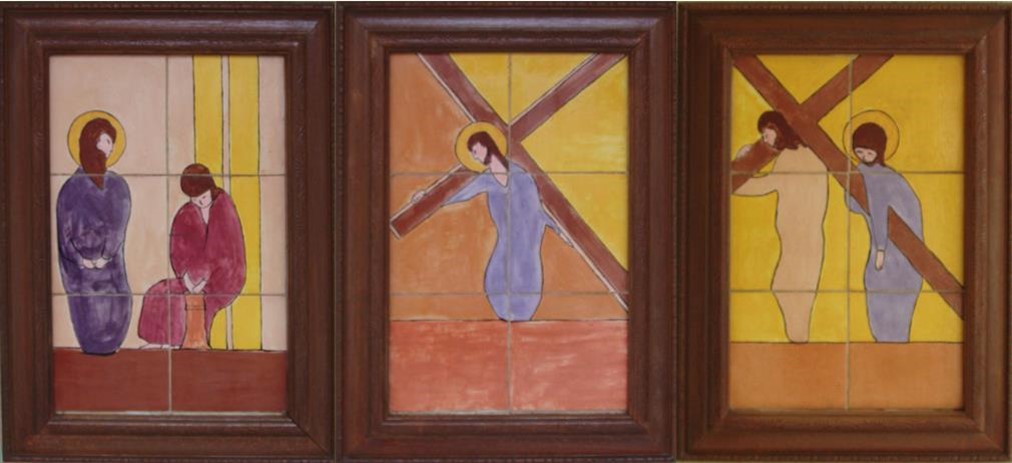 One: Jesus is Condemned to Death Two: Jesus Receives the Cross Three: The Cross is Laid on Simon of Cyrene
One: Jesus is Condemned to Death Two: Jesus Receives the Cross Three: The Cross is Laid on Simon of Cyrene
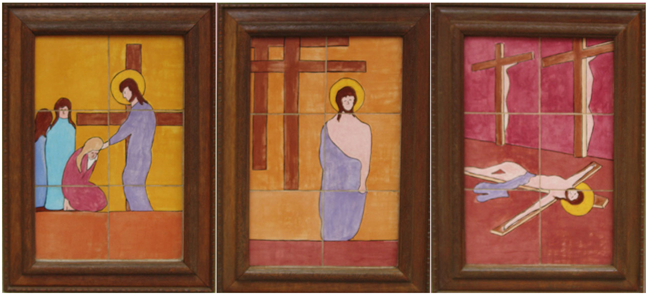
Four: The Women Mourn for Jesus Five: Jesus is Stripped of His Garments Six: Jesus is Nailed to the Cross
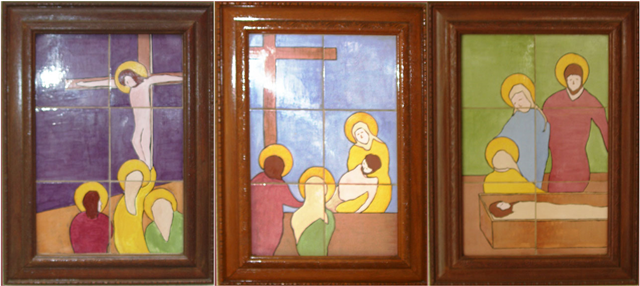
Seven: Jesus Dies Upon the Cross Eight: Jesus is Taken Down from the Cross Nine: Jesus is Laid in the Sepulcher
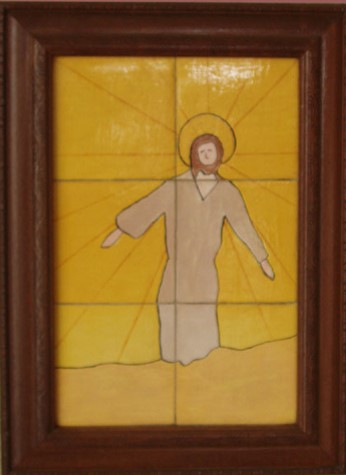
Ten: The Resurrection
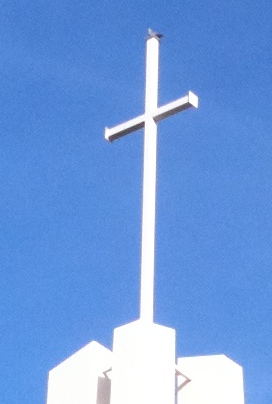
On Good Friday, 2011, a dove chose to join us at noon for the Stations of the Cross from the top of the cross!
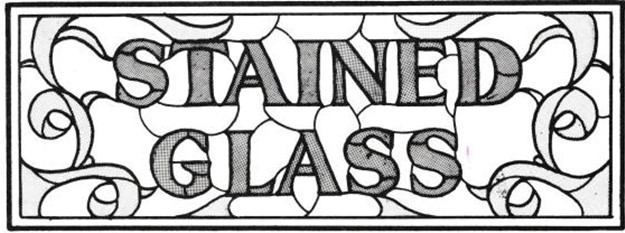
St. Columba’s has been blessed with some beautiful stained glass windows. Here are photos of the artwork along with a few notes.
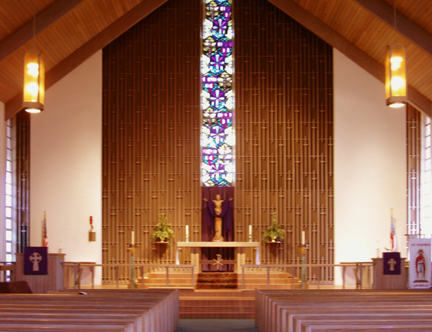
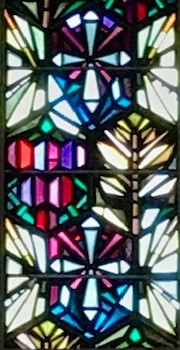
The Stained Glass window on the East-facing wall, above the chancel. At right is a detail of the window. It contains a repeated motif of grapes, wheat seed-head, and crosses. The obvious symbolism is the “body and blood” of Jesus, but the color palate is derived from the liturgical colors of the church calendar and among other things, represent the the waters of baptism as well as the passion of Jesus.
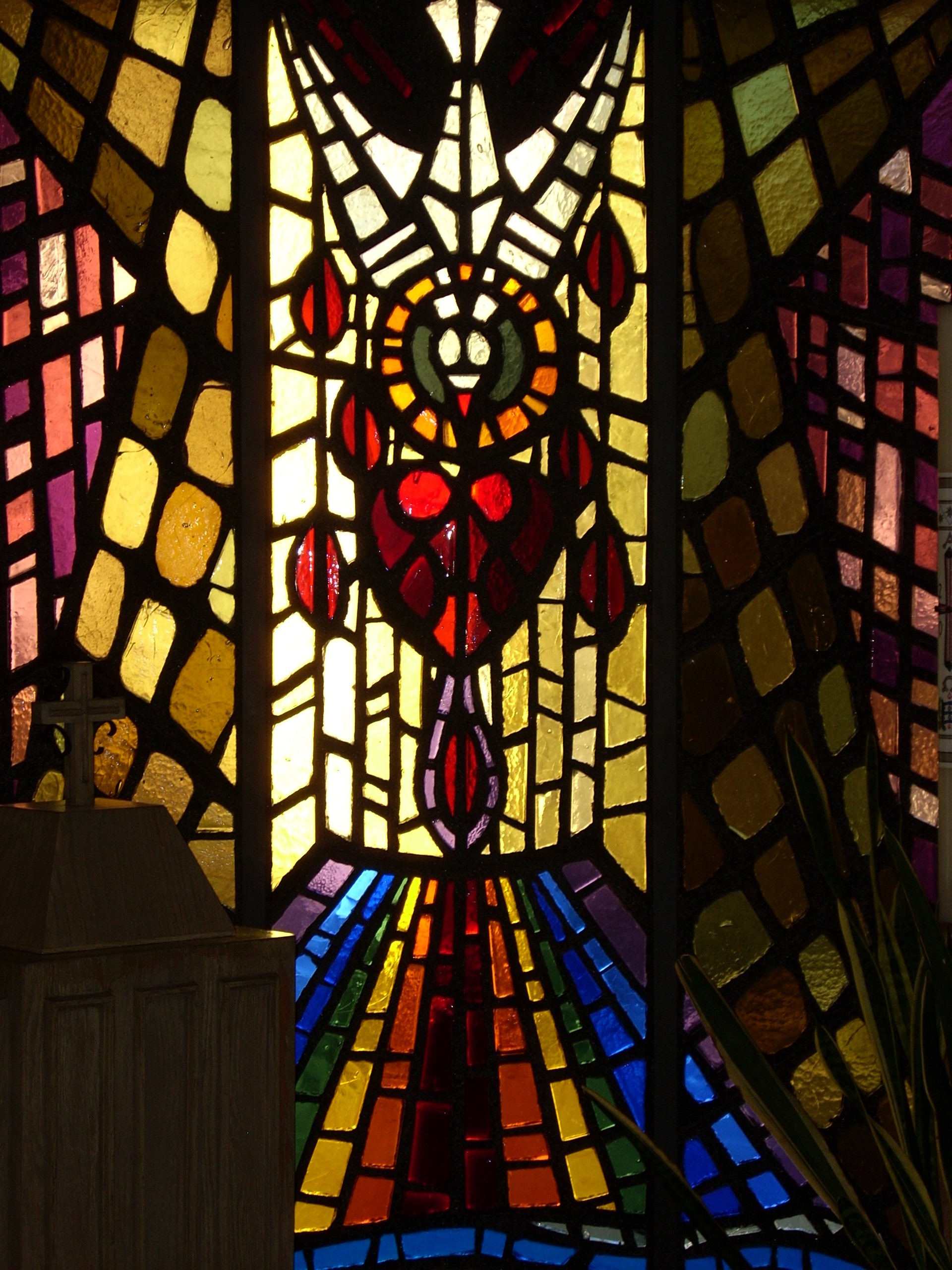
The Holy Spirit Window located in the West wall of the Narthex. Again, the artist used the colors of the liturgical calendar to portray the design. For the entry into the Church, the waters of baptism are shown blue tones. This is our entrance into our spiritual life, reflecting our birth in life as well as into our spiritual lives. The descending dove represents the gift of the Holy Spirit. How many other symbols can you find?
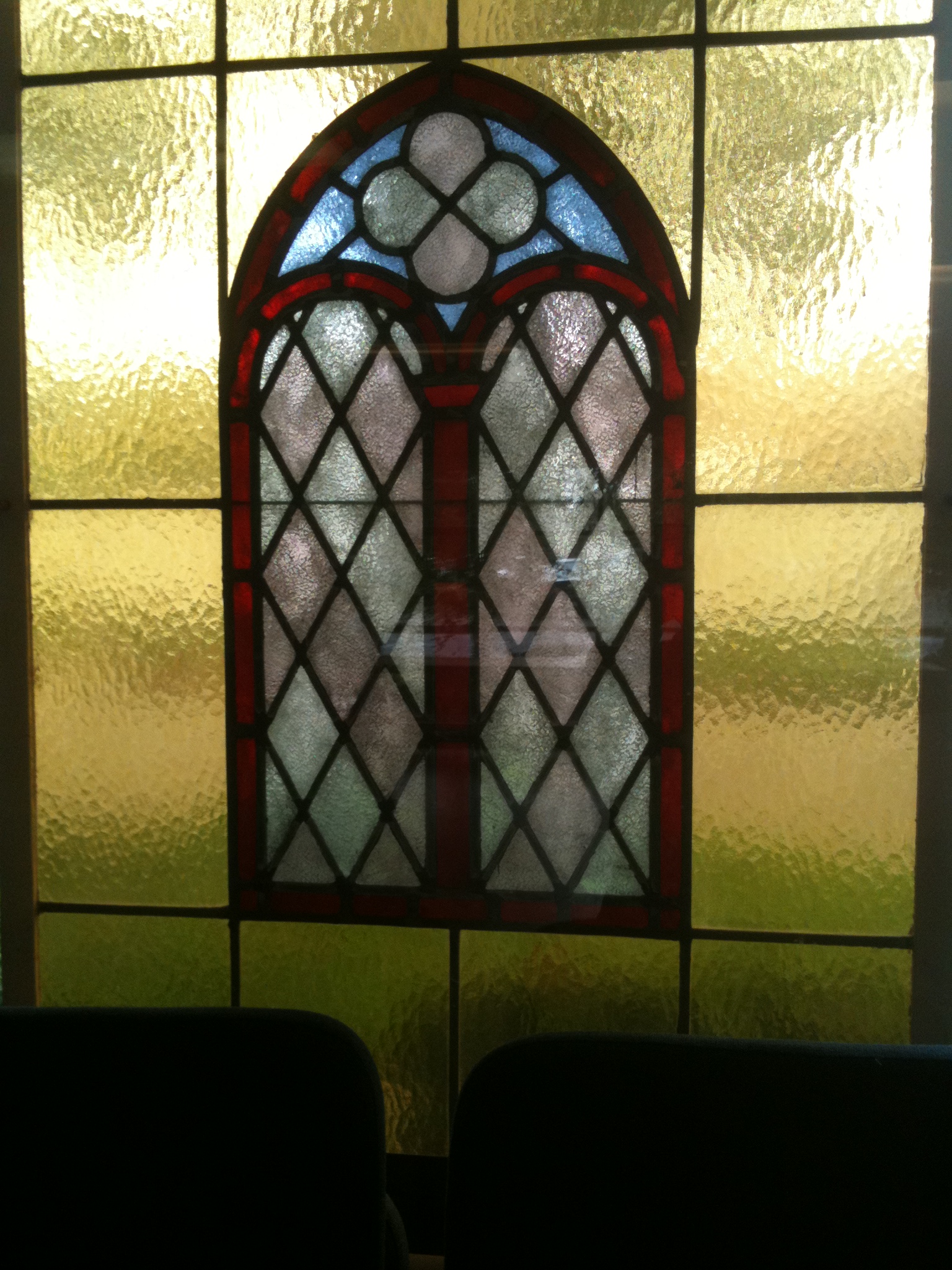
This panel is located on the West window wall of the Parish Hall. It was a gift from the Diocese when the old diocesan cathedral was demolished due to seismic concerns. Each congregation received something from the cathedral. This was the window in the St. Columba’s Chapel in the cathedral.
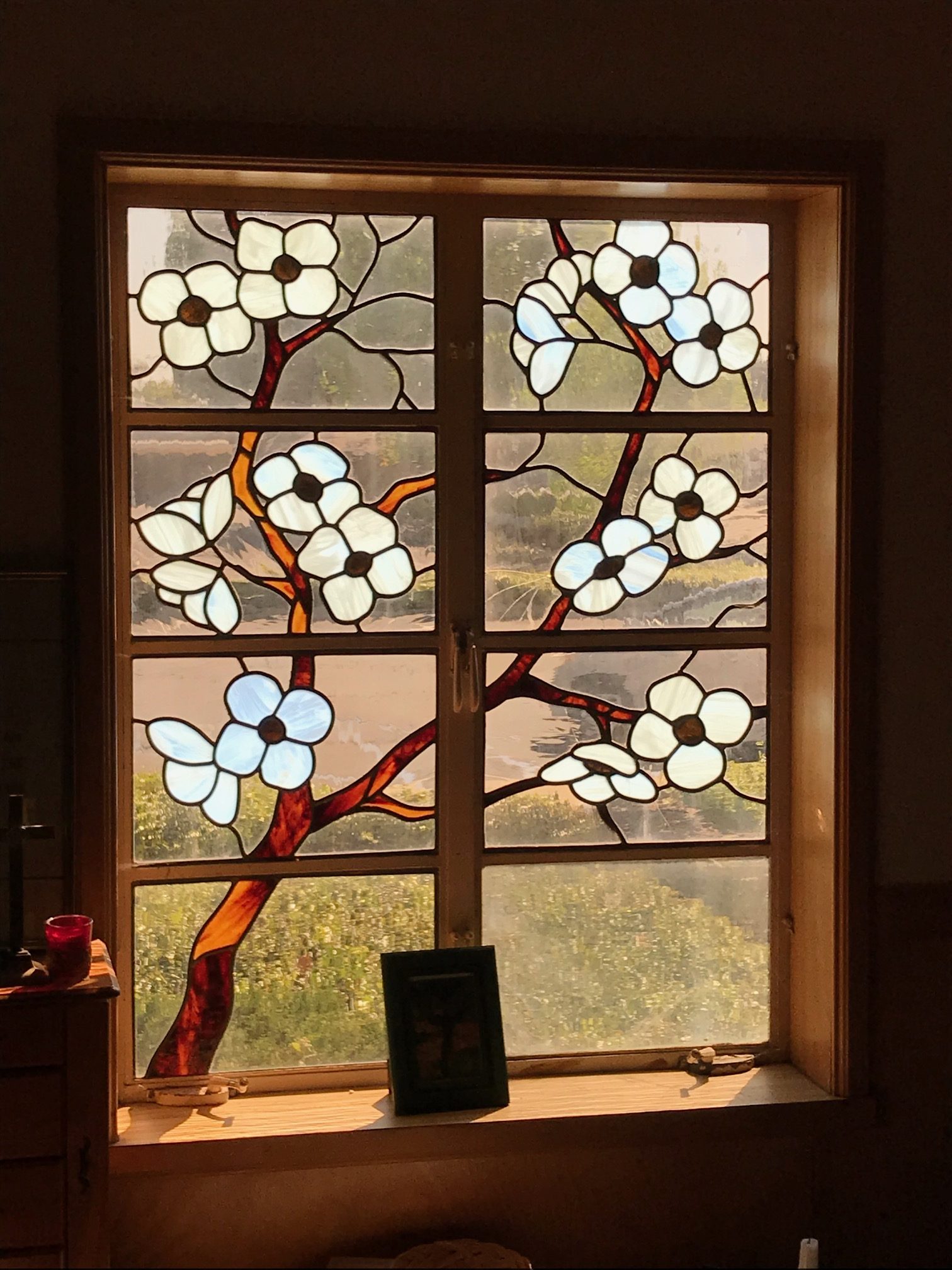
The Dogwood Window:
In the early 1980s, a few members of St. Columba’s became interested in learning about the craft of stained-glass windows. A project was conceived to make a window. Fr. Al Smith allowed the window to be crafted and installed in the Al Haberlan Memorial Library window, now the Atrium classroom for the Catechesis of the Good Shepherd. An artist worked with this small group and it was decided to create a window to depict the dogwood tree. The artist designed the window in eight sections, and individuals set out to cut the glass, set the glass in lead came. With a little help, the individual panes were created and finished. The artist installed the eight panels (seven panels in the design and the eighth panel with the Legend of the Dogwood etched into the glass. This humble webmaster cannot recall all the parishioners who helped create this window. The only individuals I can recall were Virginia Harms, Stephanie Smith, Beth Barker, Susan Doswell, Bob Waite, and Sharon Waite. There were others, who like Virginia, Beth and Sharon, are no longer with us. For several years, the window was hidden by a tall Hollywood juniper tree. The juniper has been removed, and now the window is exposed for all to see and enjoy!

There is a legend that at the time of the crucifixion the dogwood had been the size of the oak and other forest trees. So firm and strong was the tree that it was chosen as timber for the cross. To be used for such a purpose distressed the tree, and our Lord nailed upon it, sensed this, and in his gentle pity for all the sorrow and suffering, said to it: “Because of your regret and pity for my suffering, never again shall the dogwood tree grow large enough to be used as a cross. Henceforth it shall be slender and bent and twisted, and its blossoms shall be in the form of a cross, two long and two short petals. And at the center of the outer edge of each petal there will be nail prints, brown with rust and stained with red, and in the center of the flower will be a crown of thorns, and all who see it will remember.”
Quiet Places
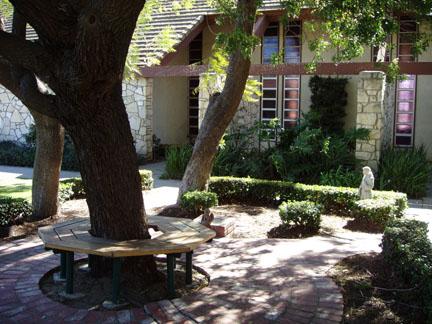
The Memorial Garden
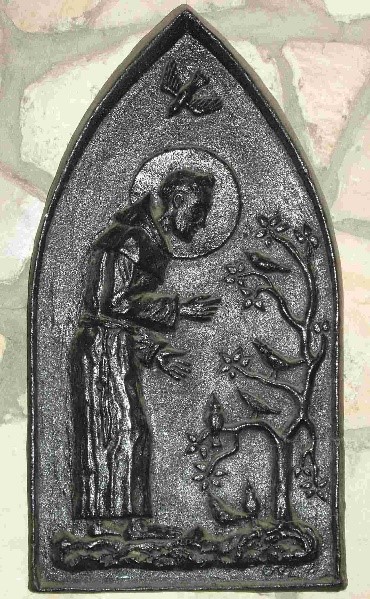
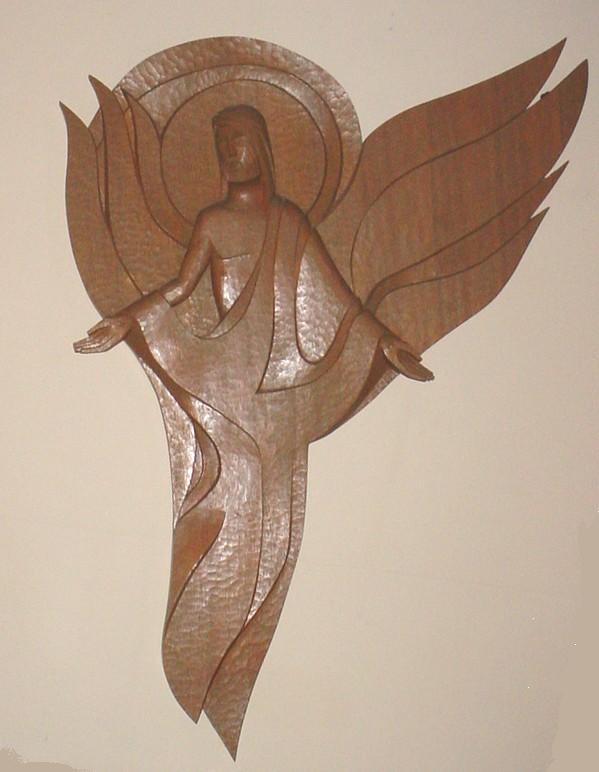
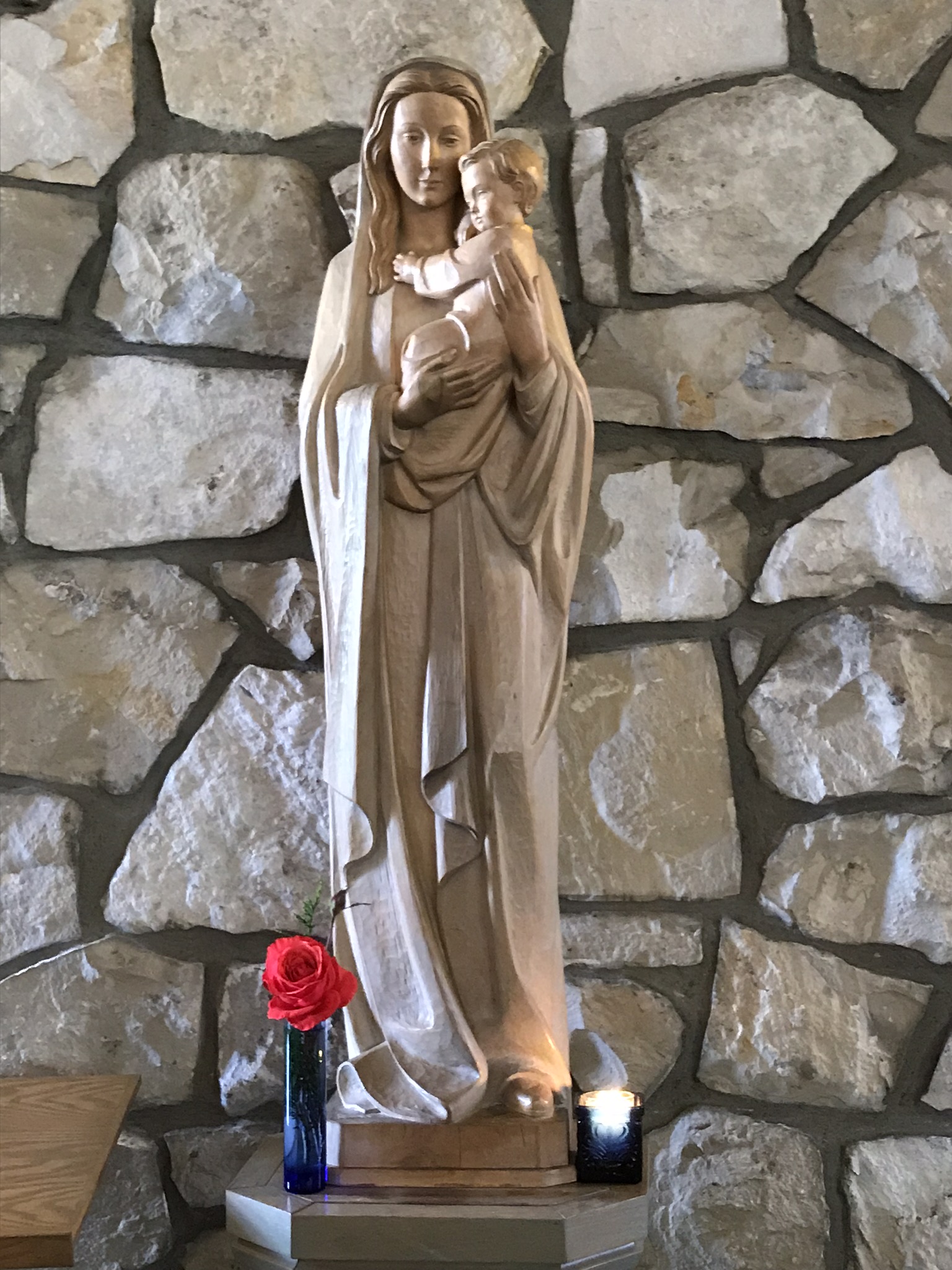
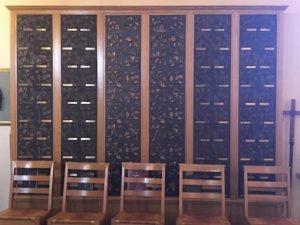
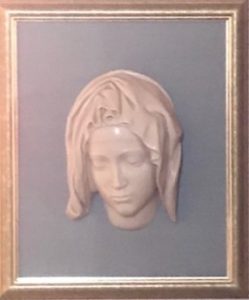
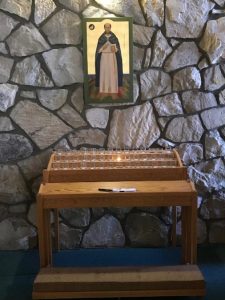
The Votive Prayer Desk was lovingly made and donated by Bernie Bobitch. It sits below the icon of our Patron Saint Columba in the Mary Chapel.
The Banners hanging in St. Columba’s Church nave were lovingly sewn by parishioners more than 45 years ago.
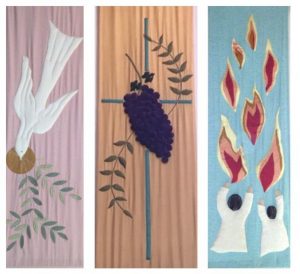 South Wall: The descending Dove represents the Holy Spirit, Grapes and olive branch represents the Blood of Christ, Pentecost with tongues of fire descending upon the Disciples.
South Wall: The descending Dove represents the Holy Spirit, Grapes and olive branch represents the Blood of Christ, Pentecost with tongues of fire descending upon the Disciples.
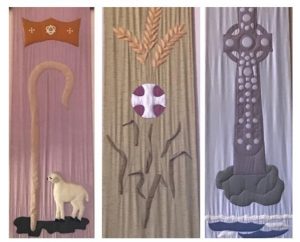
North Wall: The Trinity: Lamb of God, Wheat represents the Body of Christ, the Celtic Cross represents the St. Martin’s Cross located on the Isle of Iona, where Columba arrived with 12 companions on the eve of Pentecost, 12 May 563, and established a monastery.
In the beginning . . .
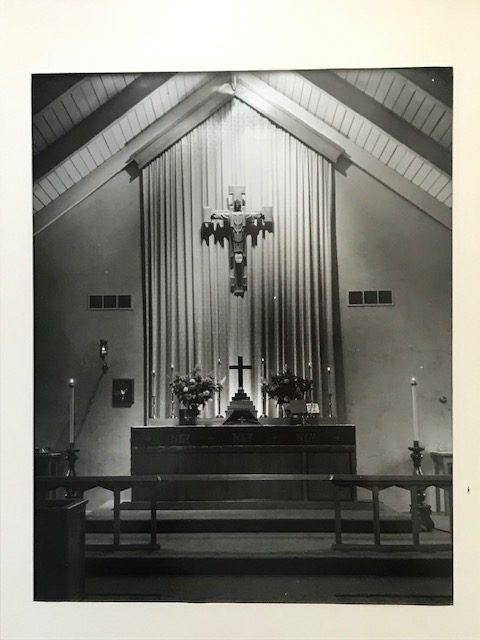
St. Columba’s worship took place in what is now the Parish Hall. Here is a photo (c. 1958) of the altar and chancel portion of where we worshiped. Hanging above the altar was the “Christus Rex” figure of Christ the King. The same Christus Rex figure now hangs over the altar in the Mary Chapel.
